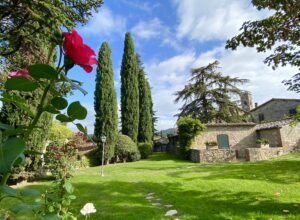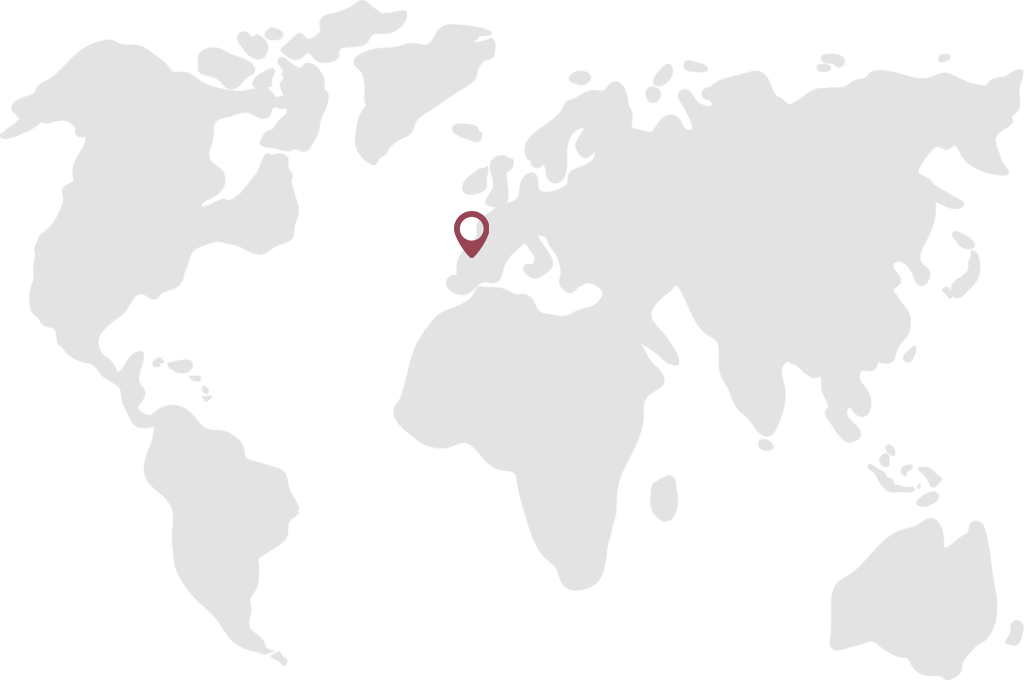

I eat breakfast at an outdoor table. The view of the expansive Colchagua Valley below is gorgeous. Alexandra Marnier Lapostolle – heir to French Grande Marnier liqueur and owner of Casa Lapostolle winery in Chile – approaches. I rise to say merci to this attractive woman – generous with her conversation and inquiries – and wish she and her husband Cyril bon voyage for their flight to Paris later that day. I tell her their Clos Apalta wine is wonderful, but confess to having drunk far too much of it the night before while staying at one of her winery cabins – casitas. She laughs, saying sometimes it’s good to do that, to ‘wash the spirit.’ She tells how they came to this undeveloped location years earlier, found vines from the 1920s that needed no irrigation, and ‘had an intuition’ that they should build a winery.


The Clos Apalta winery is an architectural marvel, a modern multi-story facility built into a mountainside that allows each stage of winemaking to proceed – via gravity – to the next step a story below. The granite mountain interior also keeps the wine cool as it ages.
The top stories of this half buried, six-story facility are sheathed by a huge glass exterior. The curving and semi-reflective glass panels resemble an immense and glamorous welder’s visor. From the top of this structure jut twenty-four curved wooden beams, like barrel staves arranged in a semicircle. Each beam that pokes towards the sky represents one of the months that Clos Apalta wine will spend aging in French oak barrels.

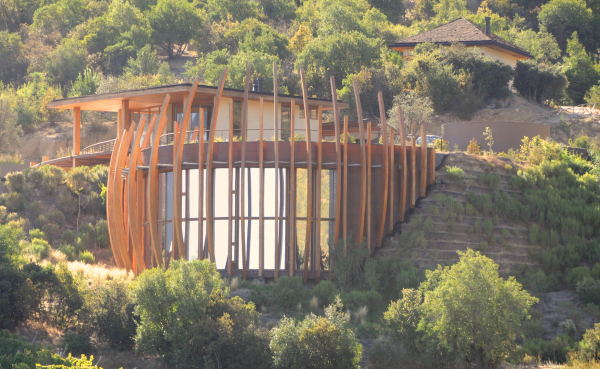
Denis Arnault is a Frenchman from Bordeaux who is in his thirties. He leads me through this unusual winery. He is courteous and articulate and speaks English with a soft French accent.
He explains how the structure faces south to symbolize respect for the southern hemisphere. He then begins our excursion in the large destemming room, where Gregorian music wafts in the background.
“They were looking for a great terroir for making wine to compete with the best around the world. And they found this place. They tried making icon wine called Clos Apalta. Great success, this wine. [Months after we spoke, Wine Spectator Magazine declared it wine of the year.] After awhile Alexandra says bon, we have great wine, we should have a special place for it, like a castle for the Grand Cru wines in France. They started to build this winery only for Clos Apalta, for the best wine. The winery produces no more than 40,000 liters a year.
“For each stage of winemaking, they’ve got their own floor here. A six floor winery. They’d been looking for harmony. From the top to the bottom they excavated 27 meters. It was blasted. Dynamite. Took two years.

“Yesterday was harvest day. The grapes came up to that reception room. We have 18 or 19 women here all destemming by hand.
“I come here in the morning and get my breakfast and watch the view. This is where fermentation takes place. We are working with wild yeast from the land, from this place, not from the market. It takes more time to finish the fermentation. Two, three weeks, when normally you take one week with yeast from the market.”

This massive cask room is the structure’s architectural forte. Large oak casks are arranged in a gorgeous oval. The curved and tinted multi-story window overlooks the valley and fields far below. The liquid flows between these steps via gravity. We follow a huge stone spiral staircase that curls downward inside the mountain.
At the landing we meet a young woman named Andrea León who runs the Clos Apalta vineyards.
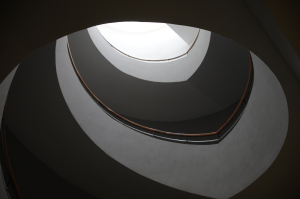
Diminutive and energetic, she wears a floral shirt and jeans. Andrea has spent ten years making wine, and several years at Clos Apalta.
“A great wine gets your gut. It expresses a place, and will make you remember it, discover it. You can change the style, but the heart of the wine is always gonna be there. That’s when you express terroir. I can come and go, changes can be made in this winery. But the terroir is always gonna be there because it’s wine from a land. When Alexandra came they saw that they could make something unique with old Carmenere grapes to give a Chilean fingerprint from the land.
“The winery is pretty and all that, but every time I drive up the vineyards I see the green mountains at the end of the dry season, while everywhere else in Chile would be yellow. I love the shape, the place. I love to go to the corner of the Merlot vines where stones are, so I can feel a connection with the area. With all this hectic, internet life, here I can stop myself a bit. It’s still on a human scale. Here, it’s kind of a family when you go harvest with friends. We’re a good team. We have fun together.”
We walk down more curling stairs. There is no background noise inside the mountain. We enter a room with 200 oak barriques. It feels sticky, yet chilly. The air is maintained at 80 percent humidity to lessen evaporation through barrel pores, but kept at 54 degrees Fahrenheit (12 degrees Celsius) for the aging process. The low lit room includes roof lights to symbolize the Southern Cross.
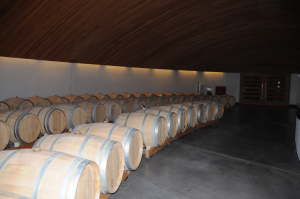

Denis pulls out bottles, glasses, and a corkscrew and pours glasses of Clos Apalta. For that vintage, the biggest percentage is Carmenere, followed by Cabernet Sauvignon, Merlot, and Petit Verdot. We swirl and sip and revel at standing inside a granite cathedral of sorts. Denis emphasizes that there is no rush.
“That the Chilean part of it. Taking time, making things better, enjoying a little more.”
